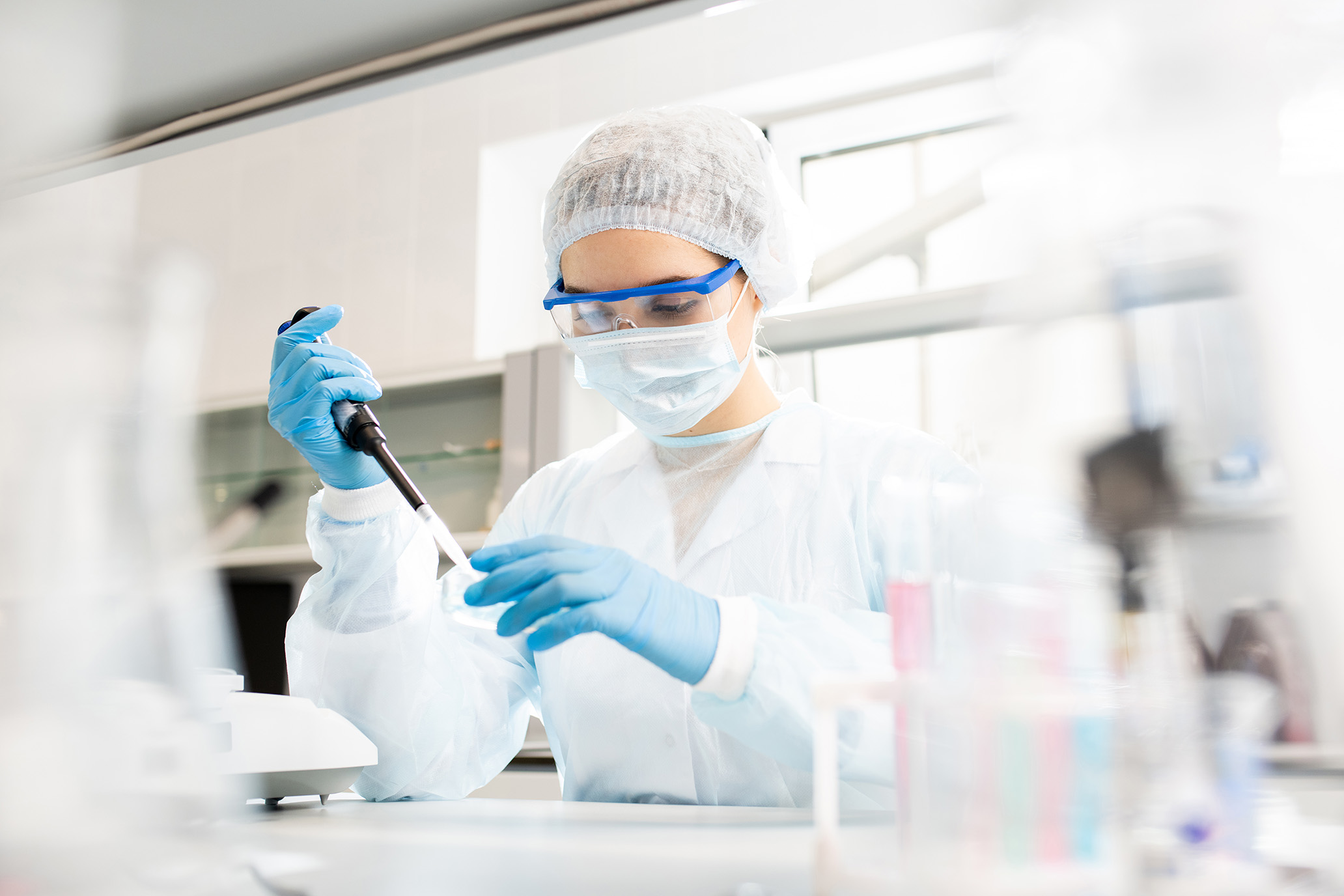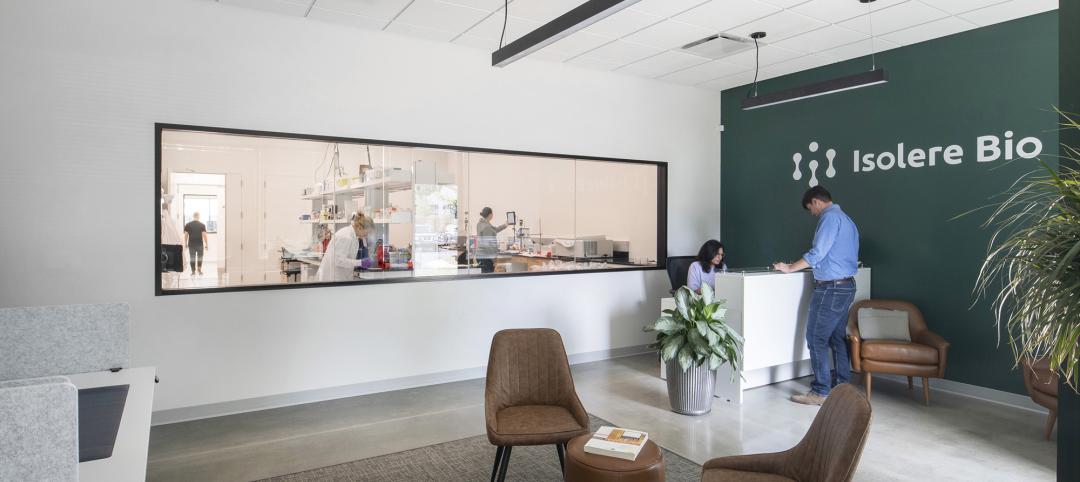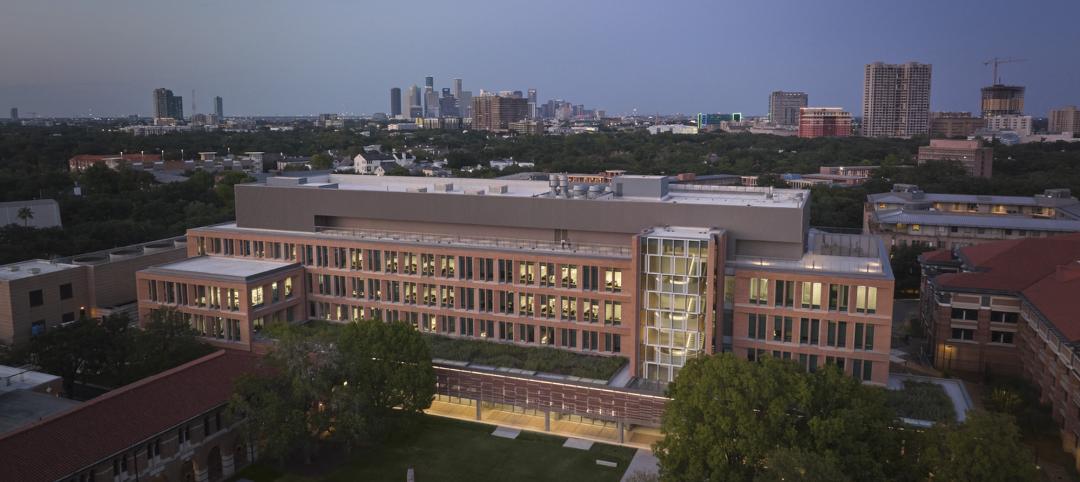A groundbreaking study conducted by ARC – Advanced Research Clusters, HOK, and the University of the West of Scotland (UWS), has revealed that half (48.1%) of all survey respondents who work in laboratory settings identify as neurodivergent, more than double the global average (20%) and more than a quarter (25.5%) identify as autistic, twenty-five times the UK average (1%). Because of this, spaces designed to foster technological and scientific innovation are inadvertently stifling the potential of the brilliant minds working within them by not addressing the sensory processing needs of the occupants.
To date, there has been a dearth of research into creating inclusive scientific spaces. Focused on science and technology innovators in laboratory settings, this study aimed to identify how individuals respond to sensory stimulation in current lab designs. It revealed how neurodivergent individuals are particularly sensitive to auditory, visual and tactile elements, exposing that many existing laboratories are not designed to address these needs holistically. These sensory distractions are linked to cognitive interruptions such as loss of focus and a disruption of creativity and innovation, which directly impacts employee engagement, satisfaction, and productivity.
The study also revealed that a third (29.9%) of the next generation of innovators consider themselves neurotypical. Without inclusive laboratory designs, the scientific research profession risks undermining these brilliant minds, leading to reduced productivity, poor recall, burnout, stress and recruitment and retention challenges.
Results for Designing Neuroinclusive Laboratory Environments
Dr. Edward Edgerton from UWS said: “Often, neurodivergent employees will manage their work environments by hiding signs of their neurodiversity. However, even when their neurodiversity is recognized, their workplaces can still be exhausting, impacting negatively on their performance and wellbeing. Few organizations have considered neurodiversity workspace design particularly for laboratories.”
ARC supports over 300 science and tech organizations and over 10,000 innovators. The anonymised study included lab-based users from ARC’s network, including the renowned Harwell Science Campus, science departments at the University of Oxford and participants from selected European science campuses.
HOK, a leading global architecture firm that specializes in designing neuroinclusive spaces, partnered with ARC and UWS for the research. The team explored ways to identify sensory preferences and challenges and to develop design principles critical to the performance, sense of belonging and overall satisfaction of the people using laboratory spaces. Studies have shown that spaces that support diverse thinking enhance creativity and innovation by 20 percent.
Kay Sargent, HOK’s director of thought leadership, interiors, said: “You don’t have to be neurodivergent to be annoyed by sound, temperature, or light. But what might be annoying for someone who is neurotypical might be debilitating to someone with ADHD, autism, or other neurodivergence. It’s about making spaces more functional for 100% of the people. By creating neuro-flexible spaces, we’re enabling some of the world’s brightest minds to come together, allowing super-creative people to find their own personal, comfortable space.”
Design Strategies for Neurodiverse Laboratories
Design strategies identified by HOK that should be implemented in future laboratory developments include: providing individuals with choices, the right level of sound and auditory controls to support specific tasks, creating spaces with access to natural daylight and biophilic elements, reducing visual clutter, having adjustable ergonomic furniture, incorporating areas within the lab to retreat or reset, and introducing collaborative areas and spaces for doodling.
Jenny Gardner, ARC’s development director said: “At ARC, we understand the importance of creating spaces that support our members in solving the world’s greatest challenges. Until now the industry has failed to address the needs and experiences of neurodiverse individuals, prioritizing sterile, modern looks and open-plan co-working spaces without areas to decompress. We’re committed to changing this by designing inclusive scientific spaces that enable our members to deliver life-changing science.”
Daisy Shearer, a Quantum physicist and neurodiversity advocate, said: "Ensuring scientific workspaces are designed with neuro-inclusion in mind is an often-overlooked aspect to accessibility and the EDI conversation. It's great to see these discussions happening around neurodiversity at ARC, so we can create inclusive spaces where all neurotypes can thrive. Good research and innovation stems from those who work on it, ensuring a diverse group of people can access these careers is key."
Related Stories
Laboratories | Apr 15, 2024
HGA unveils plans to transform an abandoned rock quarry into a new research and innovation campus
In the coastal town of Manchester-by-the-Sea, Mass., an abandoned rock quarry will be transformed into a new research and innovation campus designed by HGA. The campus will reuse and upcycle the granite left onsite. The project for Cell Signaling Technology (CST), a life sciences technology company, will turn an environmentally depleted site into a net-zero laboratory campus, with building electrification and onsite renewables.
Laboratories | Apr 12, 2024
Life science construction completions will peak this year, then drop off substantially
There will be a record amount of construction completions in the U.S. life science market in 2024, followed by a dramatic drop in 2025, according to CBRE. In 2024, 21.3 million sf of life science space will be completed in the 13 largest U.S. markets. That’s up from 13.9 million sf last year and 5.6 million sf in 2022.
Sustainability | Mar 21, 2024
World’s first TRUE-certified building project completed in California
GENESIS Marina, an expansive laboratory and office campus in Brisbane, Calif., is the world’s first Total Resource Use and Efficiency (TRUE)-certified construction endeavor. The certification recognizes projects that achieve outstanding levels of resource efficiency through waste reduction, reuse, and recycling practices.
Adaptive Reuse | Mar 7, 2024
3 key considerations when converting a warehouse to a laboratory
Does your warehouse facility fit the profile for a successful laboratory conversion that can demand higher rents and lower vacancy rates? Here are three important considerations to factor before proceeding.
University Buildings | Feb 21, 2024
University design to help meet the demand for health professionals
Virginia Commonwealth University is a Page client, and the Dean of the College of Health Professions took time to talk about a pressing healthcare industry need that schools—and architects—can help address.
Urban Planning | Feb 5, 2024
Lessons learned from 70 years of building cities
As Sasaki looks back on 70 years of practice, we’re also looking to the future of cities. While we can’t predict what will be, we do know the needs of cities are as diverse as their scale, climate, economy, governance, and culture.
Laboratories | Feb 5, 2024
DOE selects design-build team for laboratory focused on clean energy innovation
JE Dunn Construction and SmithGroup will construct the 127,000-sf Energy Materials and Processing at Scale (EMAPS) clean energy laboratory in Colorado to create a direct path from lab-scale innovations to pilot-scale production.
Laboratories | Jan 25, 2024
Tactical issues for renovating university research buildings
Matthew Plecity, AIA, ASLA, Principal, GBBN, highlights the connection between the built environment and laboratory research, and weighs the benefits of renovation vs. new construction.
Laboratories | Jan 22, 2024
Speculative vs purpose-built labs: Pros and cons
Hanbury's George L. Kemper, AIA and R. David Cole, AIA share the unique advantages and challenges of both spec. and purpose-build labs.
University Buildings | Jan 18, 2024
Houston’s Rice University opens the largest research facility on its core campus
Designed by Skidmore, Owings & Merrill (SOM), the 251,400-sf building provides students and researchers with state-of-the-art laboratories, classrooms, offices, and a cafe, in addition to multiple gathering spaces.

















